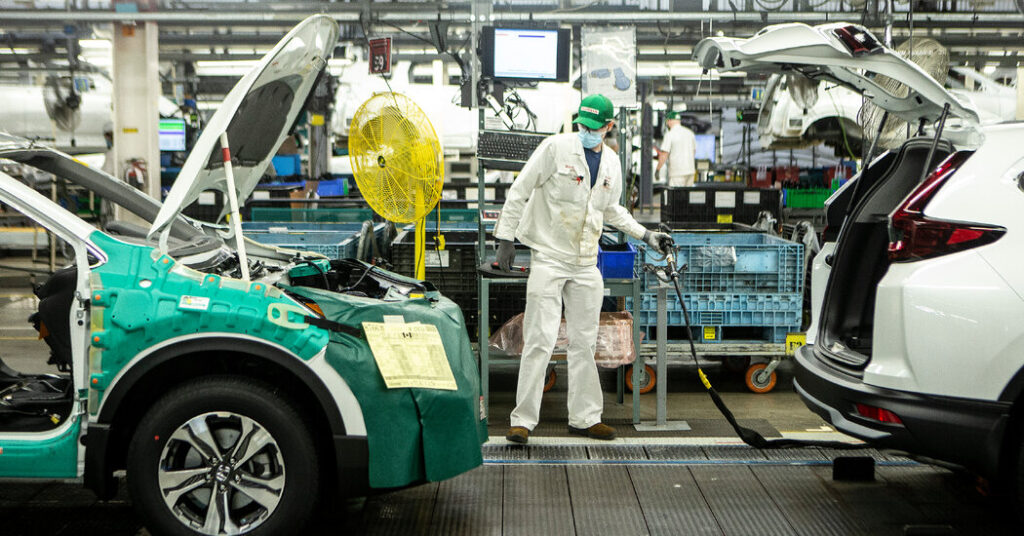In a partial roll back of its retaliation against U.S. tariffs, Canada’s finance minister said on Tuesday that the government would let automakers import vehicles assembled in the United States duty-free provided that they continued to build cars in Canada and continued with previously announced expansions.
Last week, Canada began charging 25 percent tariffs on vehicles imported from the United States in response to President Trump’s levies of the same amount on cars.
The great majority of Canadian-made cars and trucks end up in the United States. Mr. Trump has repeatedly said that he wants carmakers to move all of their manufacturing to the United States, a move widely seen in Canada as a direct assault on the country’s largest export aside from oil and gas.
Auto trade between the United States and Canada has become tightly integrated since the two countries signed a trade deal 60 years ago that eased the flow of vehicles and related goods across the border. The resulting trade has been generally balanced between the two nations, though there have been occasional, slight surpluses in the United States’ favor.
François-Philippe Champagne, Canada’s finance minister, did not specify in his statement exactly how many U.S.-made cars and trucks each of the five major automakers would be allowed to import without tariffs.
But his statement suggested that those numbers would be linked to Canadian manufacturing: “The number of tariff-free vehicles a company is permitted to import will be reduced if there are reductions in Canadian production or investment.”
A spokeswoman for Canada’s Department of Finance was unable to immediately provide further details. Stellantis, one of the major automakers, declined to comment on the announcement. Ken Chiu, a spokesman for Honda, said the company’s factories in Alliston, Ontario, would continue to produce as many vehicles as it could. The other three companies did not respond to questions.
Only Toyota and Honda, which account for about two thirds of Canadian auto production, are currently operating at or near full capacity in Canada.
Stellantis recently stopped renovating a factory in the Toronto suburb of Brampton that would have made gasoline and electric Jeeps, in what the company described as a pause. Its larger plant, in Windsor, Ontario, is in the middle of a two-week shutdown that was induced by the U.S. tariffs.
Ford’s factory in Oakville, Ontario, was closed for a now-abandoned plan to convert it for electric vehicles. It is now retooling to make large pickup trucks. And General Motors announced that it would largely shut down production of a poor-selling electric van made in Ingersoll, Ontario, until October.
https://www.nytimes.com/2025/04/15/us/politics/canada-auto-tariffs.html


